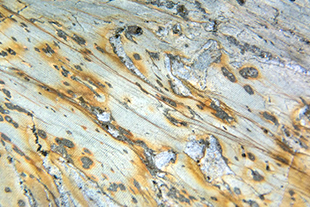Wedderburn Goldfields Ltd Exploring The Historic Wedderburn Goldfield
Wedderburn Goldfields Ltd (WGL) and its wholly-owned subsidiary PSD Minerals Pty Ltd (PSD) are actively exploring the Wedderburn area.
COMPANY OBJECTIVES
Wedderburn Goldfields Ltd (WGL) aims to re-establish underground gold mining in Wedderburn. The company plans to extract resources identified using modern geological modelling supported by diamond-drill exploration. Research of the historic Wedderburn Goldfield identified exploratory diamond drilling targets. Further research of Wedderburn’s gold mining history created a comprehensive picture of past exploration and mining on Exploration Licences EL6302 and EL8296.
Join Our Mailing List

WEDDERBURN HISTORY
Historical underground mining followed outcropping gold-bearing reefs to shallow depths, rarely extending below the water table (~25-30m). Recorded underground gold production at Wedderburn is approximately 25,000 ozs.

EXPLORATION LICENCE
Wedderburn Goldfields Ltd (WGL) via its wholly-owned subsidiary PSD Minerals Pty Ltd (PSD) is exploring on its 100% owned 51 km². Exploration Licences 6302 and 8296 (EL) within the geological area of Central Victoria known as the “Bendigo Zone”.

WEDDERBURN GEOLOGY
Wedderburn is typical of central Victorian gold deposits with comparable styles of mineralisation and structural controls. However, Wedderburn lies just 5 km from the Bendigo Zone’s western margin, defined by the Avoca Fault.

EXPLORATION TARGETS
Modern exploration techniques are being utilised on the EL for the first time with geological outcrop mapping, diamond drill core-structural lagging and geophysics, including magnetic susceptibility and conductivity measurements and XRF analysis.
WEDDERBURN’S GOLD-BEARING PLUMBING SYSTEM
Figure 1 shows: –
- The position of the 2006 seismic survey line crossing Victoria (red line) geological Stawell and Bendigo Zones (Bendigo Zone, deformed by
the Benambran Orogeny -445Ma. This event is regarded as the main source of orogenic gold to the Bendigo Zone, other later gold flows may have occurred.) - The interpreted position of a splay fault under the EL at Wedderburn.
- The position of the splay fault under the Bendigo Goldfield, which produced 22 million oz of gold.
- Inferred gold-bearing fluid pathways (white arrows) from the Cambrian Mafic Volcanics that underly the Castlemaine Group sediments (the main source of orogenic gold in the Bendigo Zone). The fluid pathways to the surface are blocked by the “steeply dipping” segments of the Whitelaw fault at Bendigo and the inferred splay fault at Wedderburn (Willman et al. 2010).
- The vertical pathway of the orogenic gold fluids to the surface at both Bendigo and Wedderburn, through the Castlemaine Group Sediments via a series of folds and second-order mineralised faults (Willman et al. 2010).
Orogenic Gold
Deep-seated splay faults can indicate fluid flows and play a significant role in forming “orogenic” gold deposits. Orogenic gold deposits are typically associated with mountain-building events (orogeneses) and the tectonic deformation of the Earth’s crust. These deposits are formed by hydrothermal processes, where hot fluids rich in mineral elements are mobilised and migrate through the Earth’s crust, eventually depositing gold and other valuable minerals.
The presence of a deep-seated splay fault is critical in the context of orogenic gold formation:
- Channelling of Fluids: A deep-seated splay-fault acts as a conduit for hydrothermal fluids to migrate from deeper sources towards the shallower crust. These fault structures create pathways for the ascent of hot, mineral-rich fluids generated by magmatic activity or metamorphism in the Earth’s interior.
- Focus of Fluid Flow: Splay faults are often associated with major fault zones and thrust faults in orogenic regions. These tectonic structures can concentrate the flow of hydrothermal fluids and create zones of increased permeability and porosity within the rock, enhancing the transport of gold-bearing fluids.
- Trapping of Minerals: As the hydrothermal fluids move along the splay-fault and interact with the surrounding rocks, they undergo cooling and pressure changes. These variations in temperature and pressure conditions can cause the fluids to deposit their mineral contents, including gold, within the fault zone and the surrounding rocks.
- Formation of Vein Systems: The deposition of gold and other minerals along the deep-seated splay fault can lead to extensive vein systems. These veins can contain high-grade concentrations of gold and serve as the primary source of gold mineralisation in orogenic gold deposits.
Deep-seated splay faults play a critical role in concentrating and channelling the hydrothermal fluids responsible for forming orogenic gold deposits. Such fault structures provide important clues about the potential for gold mineralisation in specific geological settings. By identifying these structural features and understanding the fluid flow pathways, geologists can target areas more likely to host economically viable gold deposits during exploration efforts.

Figure 1: Bendigo Zone – gold-bearing fluid pathways.
Figure 2: The stratigraphy beneath Wedderburn is best shown by the results of the 2006 deep seismic survey. The rocks in the upper crust are dominated by a sequence of marine sandstones and mudstones. These metasedimentary rocks are known as the Castlemaine Group and overlie Cambrian mafic volcanics at depth.
The Castlemaine Group is the main host for orogenic gold mineralisation in the Bendigo Zone. The Stawell Zone, which lies immediately west of Wedderburn, has a very similar stratigraphy, but in the Stawell Zone the turbidites are Cambrian in age.
The Bendigo Zone was deformed by the Benambran Orogeny (~ 445 Ma) which caused all the turbidites to be folded and faulted and initiated a major influx of ‘orogenic’ gold mineralisation. Whereas the Castlemaine Group turbidites were deformed mainly by folding and faulting, the deeper mafic volcanics were deformed into a series of imbricated thrust slices (much like tilting books on a bookshelf). So it is likely that crustal-scale faults focused gold-bearing fluids into the Wedderburn area during the main mineralising event (probably about 445 Ma).
The 2006 seismic survey revealed several large faults occur at depth in the western Bendigo Zone. One fault was inferred to splay from the footwall of the Avoca Fault into the area south of Wedderburn – this fault may be one of the fluid pathways that focused gold-bearing fluids into the vicinity of Wedderburn.




